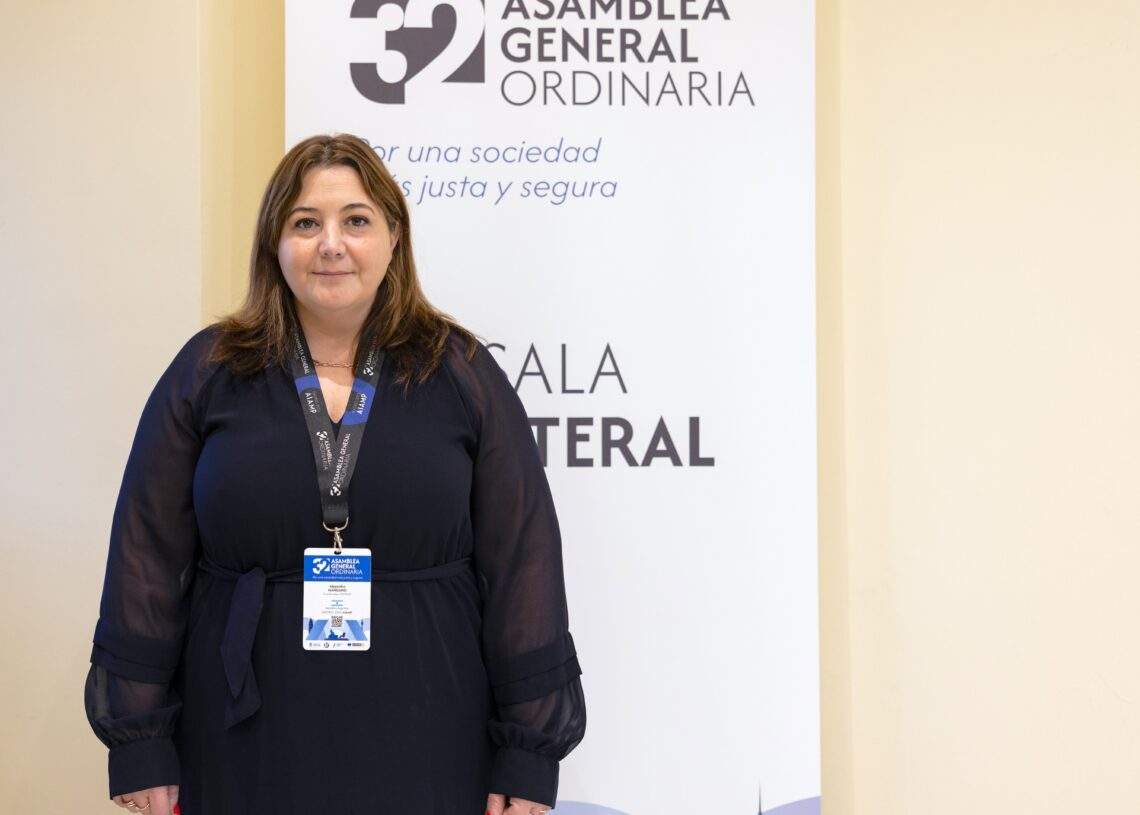María Alejandra Mángano is one of the leading figures in Argentina’s fight against human trafficking. A law graduate from the University of Buenos Aires, she also serves as Co-Coordinator of the Trafficking Network within the Ibero-American Association of Public Prosecutors (AIAMP).
Firm in her views on the State’s role in addressing organised crime, she has led several high-profile cases, combining legal expertise with social sensitivity. Her career reflects a consistent commitment to justice with a human rights approach.
Mángano is a key ally of the COPOLAD III programme in its efforts to incorporate a gender perspective into drug trafficking investigations.
COPOLAD III supports AIAMP in strengthening the gender dimension in the link between drug trafficking and human trafficking, particularly by fostering collaboration between the Ibero-American Networks of Specialised Prosecutors: the Network against Trafficking in Persons and Migrant Smuggling (REDTRAM), the Drug Prosecutors’ Network (RFAI), and the Gender Network (REG).
The joint work between these three networks and justice system actors across various AIAMP countries has resulted in a regional diagnosis, enabling a better understanding of the contexts and typologies observed in the region, particularly regarding the dual role of victim/offender. This has led to the recent adoption of the “Guidelines for addressing cases in which women and LGTBIQ+ trafficking victims are involved in the production, transport, or sale of drugs”.
What is the general context of sexual exploitation within drug trafficking?
We began to notice the involvement of people in situations of exploitation, especially in the transport and distribution phases of drugs. This includes the use of so-called “human couriers” — individuals who carry narcotics in their bodies across borders. In 2023, we carried out a diagnosis confirming that human exploitation is indeed taking place at this stage, primarily affecting women.
Was this diagnosis carried out regionally?
Yes, it was a regional diagnosis conducted by COPOLAD III with the support of several countries. We found that exploitation occurs not only during transport but also in the production phase — particularly in cultivation — and in retail distribution, often linked to sexual exploitation.
It’s striking how women tend to occupy the lowest levels of the drug trafficking chain. Could you expand on that?
Indeed. There is a narco-culture structured around patriarchal power dynamics. Women, trans people, adolescents and children are often used in the most vulnerable stages — such as transport and distribution — due to their profile and circumstances.
How can the gender perspective be better integrated into the justice system?
We are working to highlight extreme situations of exploitation where individuals are forced into illegal activities through physical or psychological coercion. There are legal tools available to prevent the criminalisation of trafficking victims by recognising them as victims, not offenders.
Why does Latin America have the highest female prison population for drug-related offences?
The production phase is more hidden, while the distribution phase is more visible, making it easier for those in vulnerable positions to be detected and imprisoned.
Some argue that the idea of proportionality and vulnerability is too lenient. How would you respond?
Our aim is to identify those truly responsible for exploitation and drug trafficking — those operating behind the scenes — and to target the upper levels of the chain of accountability through state action. The goal is not to criminalise those who are coerced into participating due to their vulnerability.






